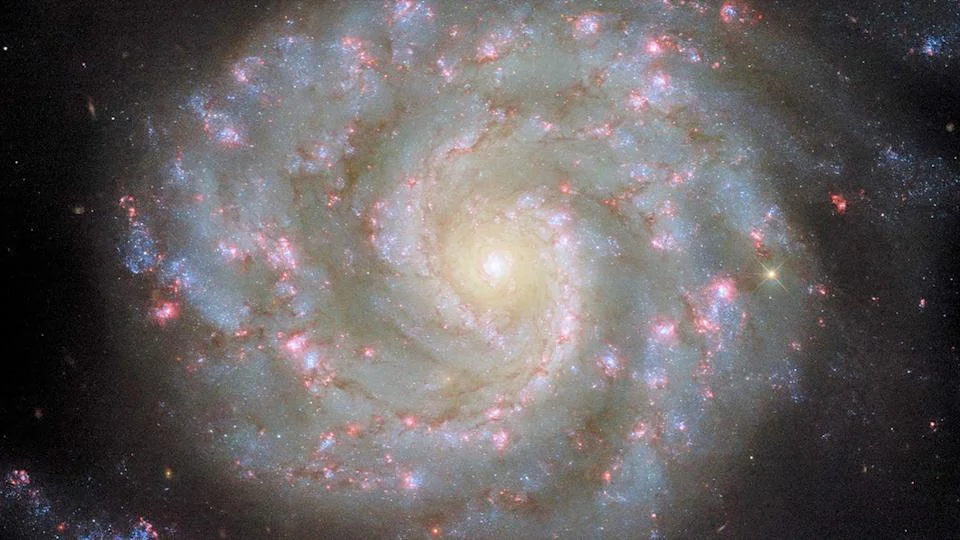
Hubble Captures Hypnotic Spiral Galaxy NGC 3596, Unraveling 90-Million-Year Mystery
The Hubble Space Telescope has delivered a stunning new image of the spiral galaxy NGC 3596, located a staggering 90 million light-years away in the constellation Leo. This celestial vortex not only offers a breathtaking view but also helps unravel long-standing mysteries about the formation and evolution of spiral arms in galaxies. What secrets does this distant galaxy hold, and how does it challenge our understanding of the cosmos?

NGC 3596 presents an almost perfectly frontal view from Earth, allowing astronomers a clear perspective of its symmetrical spiral arms. These arms are dense clusters of stars, gases, and dust, actively birthing new stars. The bright pink areas in the image highlight regions of intense star formation, while young, blue stars trace the galaxy's elegant spiral structure.
For decades, the formation of spiral arms has been an enigma in astronomy. Early theories proposed a "winding problem," suggesting that spiral arms would tighten and eventually disappear as the galaxy rotates. However, current research indicates that spiral arms are more likely patterns in high-density and low-density regions, rather than fixed physical structures. As stars, gas, and dust orbit within the galactic disk, they move in and out of the spiral arms, slowing down and aggregating upon entry before continuing their journey through the galaxy—akin to cars encountering a traffic jam.
Astronomer William Herschel first documented NGC 3596 in 1784. NASA officials note the sheer diversity of spiral galaxies when pondering their shape: "Some have clear spiral arms, while others have patchy, feathery arms. Some have prominent bars across their centers, while others have compact, circular nuclei. Some have close neighbors, while others are isolated."
The image, captured using six different wavelengths of light, underscores the dynamic nature of NGC 3596 and its star-forming regions. While individual stars journey through the galaxy's arms like cars through the aforementioned traffic jam, a larger theory suggests the acceleration gravity from a black hole may also be at play.
The Hubble Space Telescope continues to provide invaluable insights into the cosmos, challenging and refining our understanding of galaxies and their evolution. The mesmerizing beauty of NGC 3596 serves as a reminder of the vastness and complexity of the universe, prompting further exploration and discovery.
What do you think about this new image of NGC 3596? Share your thoughts and comments below!